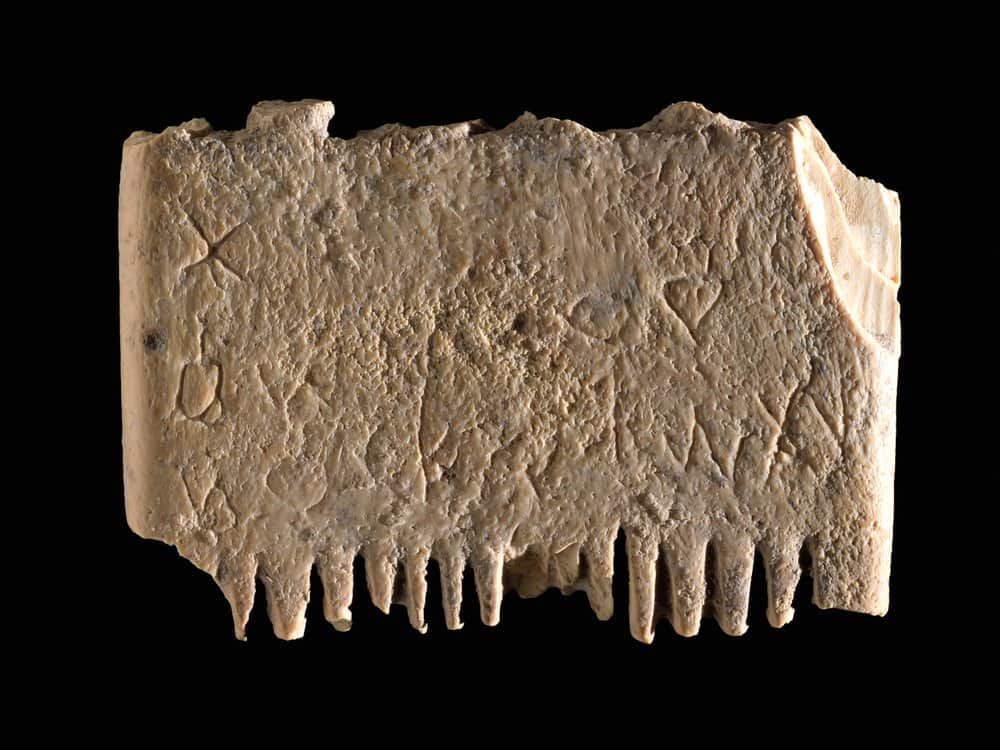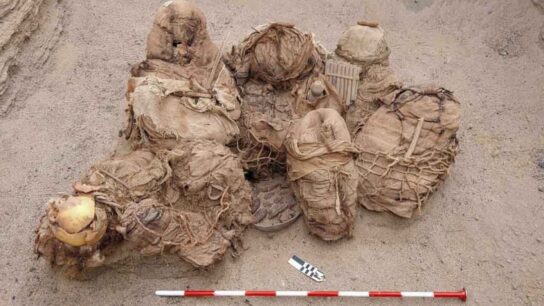Ancient comb bears the oldest known sentence in Canaanite, the earliest alphabet
Archaeologists have found the oldest sentence written in Canaanite—the earliest known alphabetical system— carved into an ivory comb. The engraving is a wish for the user to be rid of lice from hair by using the comb.
The comb was found in Tel Lachish, Israel in 2017, by a team of archaeologists from the Hebrew University of Jerusalem and the Southern Adventist University, U.S., however, the inscription was discovered as late as December of 2021 as the carving was extremely faint.

The study, published in the Jerusalem Journal of Archaeology, says that the comb is a small, worn structure measuring about 3.5 by 2.5 cm with only the stumps of teeth and the base remaining. On the comb, the archaeologists identified 17 tiny Canaanite letters that read “May this tusk root out lice of the hair and the beard.”
Much like modern-day two-sided combs, one side had six thick teeth to untangle knots while the other side had fourteen fine teeth to root out lice and their eggs. Further analysis of the comb showed remains of head lice in the second tooth; however, due to climatic conditions, only the outer chitin membrane of the nymph stage louse was found.
Canaan was an ancient civilization that flourished in present-day Israel in the Late Bronze Age around 1400 BC. Lachish was a major Canaanite city-state in the second millennium BC. The Canaanites developed an alphabetical system of writing around 1800 BC. The style of writing on the comb is primitive and still in the early stages of development of the alphabet, says the paper.
“This is the first sentence ever found in the Canaanite language in Israel. There are Canaanites in Ugarit in Syria, but they write in a different script, not the alphabet that is used today. The Canaanite cities are mentioned in Egyptian documents, the Amarna letters that were written in Akkadian, and in the Hebrew Bible. The comb inscription is direct evidence of the use of the alphabet in daily activities some 3,700 years ago. This is a landmark in the history of the human ability to write,” said Yosef Garfinkel, one of the authors of the study, in a press release.

According to the researchers, the inscription is an important find as it fills in some of the gaps in the knowledge regarding the cultural and social aspects of Canaanite life. For instance, the inscription shows evidence of the more mundane aspects of everyday life such as haircare and dealing with lice.
Further, ancient combs were commonly made from wood or bone; however, this particular comb is made from ivory, which came from elephant tusks. Researchers suggest that it was a luxury item imported from places that had elephants—likely Egypt—indicating that people of high social status in Lachish too suffered from lice.
It also clarifies details about the ancient language as inscriptions of only letters and a few words dating to this time have been found before. “For the first time, we have an entire verbal sentence written in the dialect spoken by the Canaanite inhabitants of Lachish, enabling us to compare this language in all its aspects with the other sources for it,” the release notes.
The researchers also note that this is the first discovery in the region where the purpose of the object is written instead of a dedicatory or ownership inscription.
Archaeologists have not been able to narrow down the actual age of the ivory comb as carbon dating was not possible but they considered it to have been used in 1700 BC, making it 3,700 years old.




